Shower trap syphon
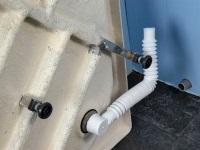
Shower cabins are very popular in apartments and private homes. They are especially good in small rooms, where it is difficult to put a bathtub. Whatever the stall, it is necessary to organize the drainage of water from the tray in the sewer, for which you need a special siphon.
The operation of this device is quite simple. It consists of a curved pipe, at the bottom of which there is always water. Siphon is installed not only for showers, but also for all other plumbing devices that work with water.

Types of siphons for the tray
The market of sanitary products offers a variety of siphons in terms of production material, configuration, quality and price. Its choice also depends on the shower tray itself, namely the drain hole. There are several options for classifying such devices:
According to the principle of operation:
- Bottle. Siphon got this name, as it has the form of a simple bottle. But this does not prevent it from being the most convenient to use and functional;
- pipe siphons. Such siphons in their structure are even simpler than the previous ones. They are made in the form of a curved pipe, made of plastic, metal, so they have different properties and applications. But the most common kind is the corrugated one, which can be simply stretched.
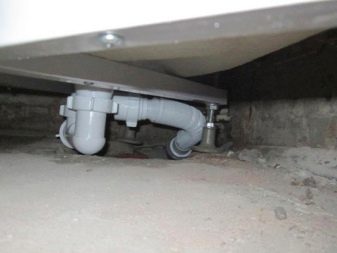
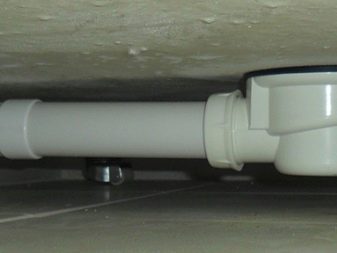
By control methods:
- conventional. The conventional trap is controlled by a simple plug. When it is pulled, water flows into the pipe, and from it into the sewer;
- automatic. The drain opens automatically, a person only needs to press a special lever. This is very convenient, because there is no need to bend over;
- Click-Clack device. A special design of the drain plug allows you to press it with your foot, after which it automatically opens. This is the most complex system, so the most expensive.
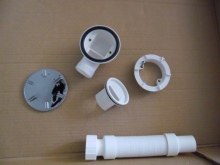
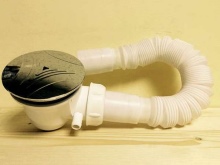
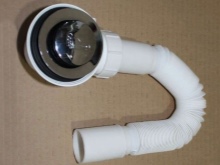
Design of siphons
As already mentioned, there are quite a few different types of shower stall traps on the market. But the most popular type is plastic traps, which have the best combination of price and quality. Such a device has the following configuration:
- A grid that closes the drain and prevents large particles from getting into the pipes;
- a gasket for the grid. To ensure that the grid fits tightly to the tray and does not let water in, a rubber seal is placed between them;
- outlet outlet. It has a rim, to which the seal is attached;
- a seal for the branch pipe made of rubber;
- a screw to be screwed into the spigot nut;
- The main part of the trap, or bowl, in which the water always resides;
- Corrugation or pipe that connects the bowl to the sewage system.
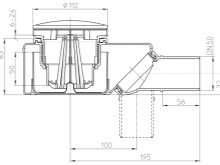
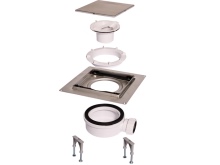
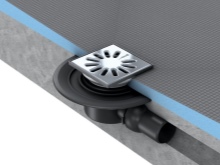
These elements must be present in the set of each siphon. For example, rubber seals and gaskets prevent water leakage. They must be on the outside and inside of the shower tray drain. All screws are made of stainless steel, which will ensure the longevity of the entire trap design and its attachment.
Traps for low and high shower trays
Low shower trays impose some restrictions on the use of various plumbing devices for their maintenance, including traps. The standard bottle trap is not suitable for draining such a tray. Of course, the tray can be installed on a small pedestal, so that under it there is more free space. But this negates all the advantages of such a shower. To solve the problem of drainage, experts recommend using:
- Corrugated siphon. Due to its flexible design, such a siphon can be placed in a limited space, organizing the necessary slope for water drainage. But the disadvantage of corrugation is its low strength, as well as on its inner surface dirt quickly accumulates. It is quite possible that soon such a siphon will have to be replaced. Fortunately, its cost is low.
- Pipe siphon. It is in the form of an S-shaped pipe with a water plug. Takes up little space and provides a reliable drain. The pipe is much easier to clean than a corrugated pipe.
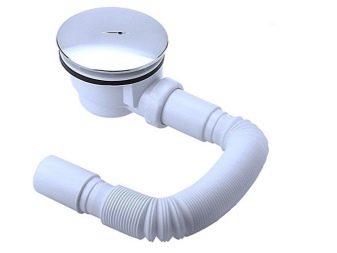
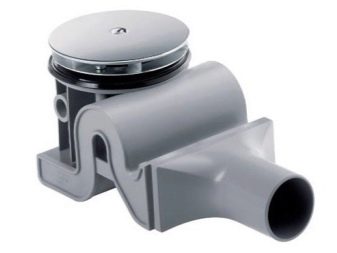
And for high shower trays you can use absolutely all kinds of siphons. Thanks to this design, it is much easier to install and replace pipes and other elements.
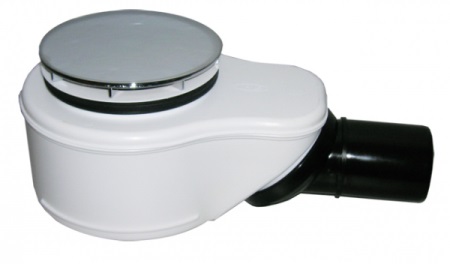
Connecting the trap
Install a new or replace an existing siphon is quite simple, it does not require special knowledge and special tools. First you need to read the instructions, make sure all the components are available. To connect the siphon was successful the first time, you should follow these tips:
- To ensure a reliable drain, the tray must necessarily be higher than the sewer inlet.
- Experts recommend using flexible plastic pipes, because they are much easier to adjust.
- The slope of the pipe - about 1-2 centimeters per 1 meter of length.
- If the distance between the shower and the sewage inlet is several meters or more, it is necessary to install a special pump that will pump water from the tray.
The siphon itself is installed quite simply. First, a grid is inserted into the drain with a gasket, drain outlet. They are connected to the bottom siphon bowl, to it - the pipe that goes to the sewer. At the outlet of the sewer is put on a socket, the tube is attached to it siphon. It is necessary to use rubber gaskets and seals to make it impossible to leak. The system is tested for about 10-15 minutes. If at a high water pressure no leaks are detected, you can safely use the shower.

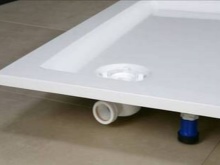
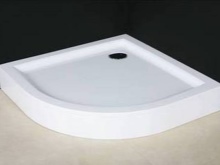
Tips for choosing a siphon
To choose the right siphon for your shower, you should follow these tips:
- One of the main criteria in choosing - the diameter of the drain pan. Most models have a diameter of 52, 62 and 90 mm. Data on the size should be in the shower manual, but you can measure it yourself. Of course, you can take a siphon of a smaller diameter, but this will make it impossible to ensure reliable sealing.
- The flow capacity of the siphon is also important. It is calculated according to the height of the tray, which can hold a particular volume of water. For example, if the diameter of the trap is 52 or 62 mm, for normal drainage, the maximum water level in the tray should not be more than 12 cm, and for larger traps - 15 cm.
- To be able to clean the trap in the future without dismantling the entire shower, it is better to buy self-cleaning devices. Be sure to install a fine grid on the drain, through which hair and other small particles will not fall.
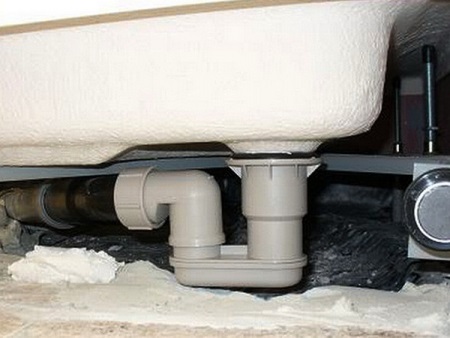
Maintenance and care of the siphon
Maintenance of the device consists of its regular cleaning, depending on the frequency of shower use. If 52 or 62 mm diameter traps are used, you need to make sure they are accessible for cleaning, because they get dirty pretty quickly. Siphons with a diameter of 90 mm can be cleaned through the intake spigot. Most models have special bowls in which all debris is retained. It is simply unscrewed from the trap and cleaned.
It is possible and even necessary to use chemicals for cleaning, but it is necessary to read the instructions. However, plastic or corrugated traps can be deformed by some substances, so you should be careful when choosing cleaning agents.
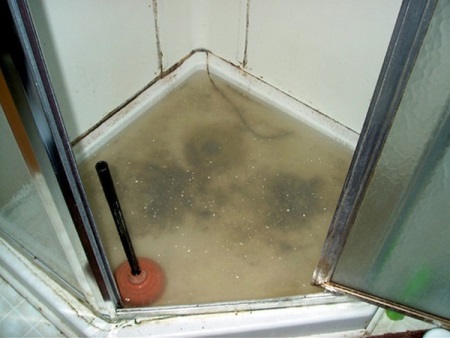
Thus, in the selection and installation of the trap with their own hands there is nothing difficult. The main thing is to adhere to all the recommendations and tips outlined in the article.




